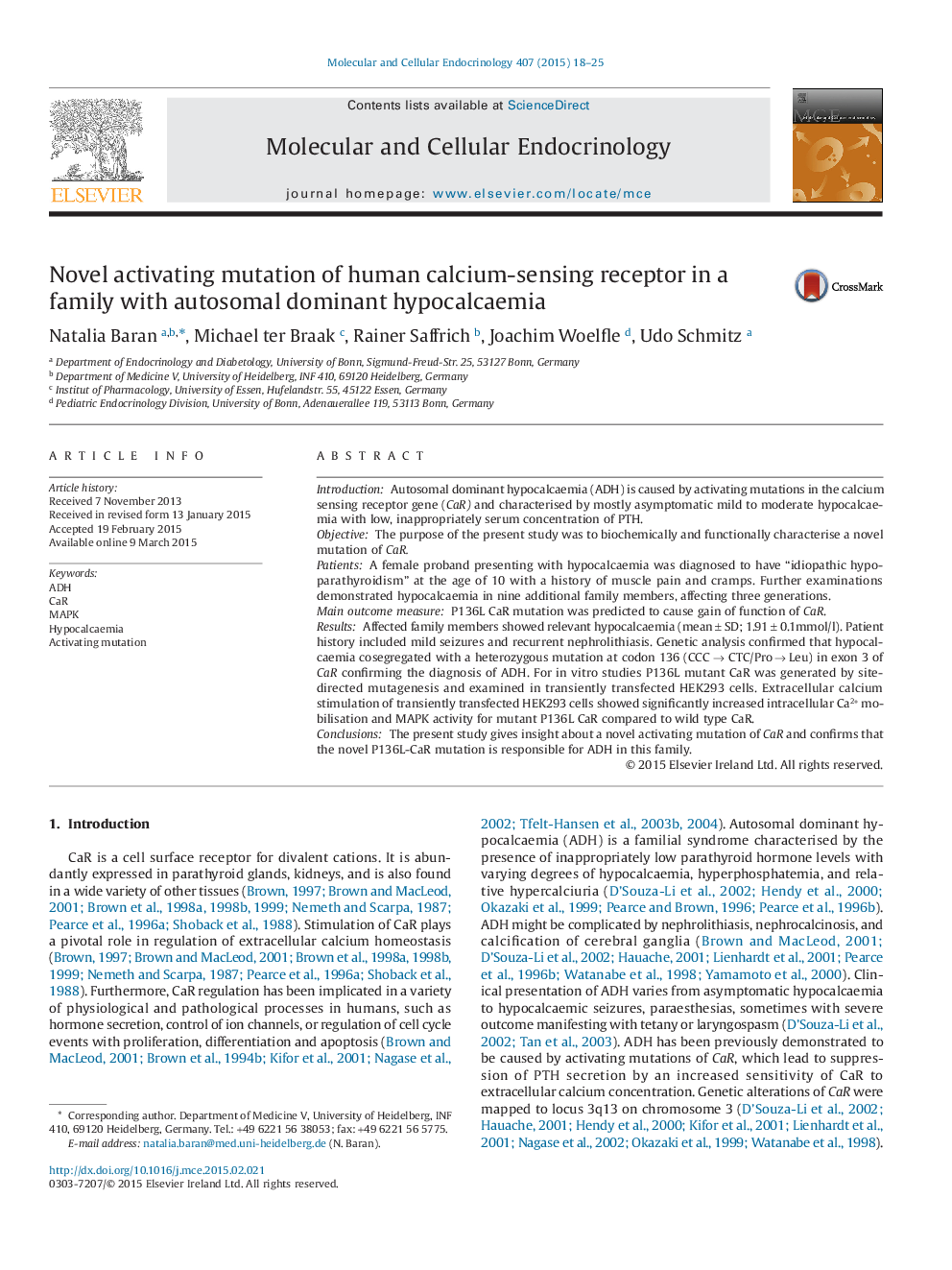| کد مقاله | کد نشریه | سال انتشار | مقاله انگلیسی | نسخه تمام متن |
|---|---|---|---|---|
| 2195855 | 1550871 | 2015 | 8 صفحه PDF | دانلود رایگان |
• The novel activating mutation of Calcium Sensing Receptor (CaR) was described.
• In vitro studies on P136L-CaR with FURA-2/AM present a significantly left-shifted concentration-response curve for mutated receptor.
• MAPK-activity confirmed left-shifted activation curve of ERK, p38 and JNK for P136L-CaR compared with wild type CaR.
• The results confirm the association of biochemical and clinical features of the characterised family with the novel P136L-CaR mutation.
• The P136L-CaR mutation is responsible for ADH in this family.
IntroductionAutosomal dominant hypocalcaemia (ADH) is caused by activating mutations in the calcium sensing receptor gene (CaR) and characterised by mostly asymptomatic mild to moderate hypocalcaemia with low, inappropriately serum concentration of PTH.ObjectiveThe purpose of the present study was to biochemically and functionally characterise a novel mutation of CaR.PatientsA female proband presenting with hypocalcaemia was diagnosed to have “idiopathic hypoparathyroidism” at the age of 10 with a history of muscle pain and cramps. Further examinations demonstrated hypocalcaemia in nine additional family members, affecting three generations.Main outcome measureP136L CaR mutation was predicted to cause gain of function of CaR.ResultsAffected family members showed relevant hypocalcaemia (mean ± SD; 1.91 ± 0.1mmol/l). Patient history included mild seizures and recurrent nephrolithiasis. Genetic analysis confirmed that hypocalcaemia cosegregated with a heterozygous mutation at codon 136 (CCC → CTC/Pro → Leu) in exon 3 of CaR confirming the diagnosis of ADH. For in vitro studies P136L mutant CaR was generated by site-directed mutagenesis and examined in transiently transfected HEK293 cells. Extracellular calcium stimulation of transiently transfected HEK293 cells showed significantly increased intracellular Ca2+ mobilisation and MAPK activity for mutant P136L CaR compared to wild type CaR.ConclusionsThe present study gives insight about a novel activating mutation of CaR and confirms that the novel P136L-CaR mutation is responsible for ADH in this family.
Journal: Molecular and Cellular Endocrinology - Volume 407, 15 May 2015, Pages 18–25
